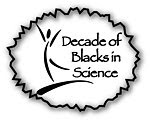President Obama is scheduled to announce a campaign to enlist companies and nonprofit groups to spend money, time and volunteer effort to encourage students, especially in middle and high school, to pursue science, technology, engineering and math (STEM). The campaign - "Educate to Innovate" will primarily focus on informal education opportunities such as after-school activities, mentoring opportunities with scientists and researchers, plus quality science and math promotion television. So far, Elmo and Big Bird have signed up and the MacArthur Foundation is sweetening the pot to encourage video game designers to create educational gaming software. In addition to Sesame Street and many professional science societies signing on, big media outlets and stepping in also, donating money, equipment, and television time.
 Is it me or does this sound like President Obama tried to scoop the upcoming edition of Diversity in Science Carnival -
Is it me or does this sound like President Obama tried to scoop the upcoming edition of Diversity in Science Carnival -
Broad Impacts II: Programs to promote STEM Diversity among K-12 students and general audiences?
Well, maybe not a scoop, but that sure is great timing. You all know how much I love theme-related carnivals. I'll take Obama's move as his official endorsement of the awesomeness of the science outreach and overall interest in participating in the upcoming DiS Carnival. When the official announcement comes out, I'll assume that White House is submitting that post to the upcoming carnival. I know they have their hands full so I'll submit it for them.
Read the entire news story published in the Science section of the New York Times. White House Plans Campaign to Promote Science and Math Education, November 22, 2009.
**********UPDATE****************UPDATE**************
President Obama Launches "Educate to Innovate" Campaign for Excellence in Science, Technology, Engineering & Math (Stem) Education
Nationwide effort includes over $260 million in public-private investments to move American students to the top of the packin science and math achievement over the next decade.

President Obama today launched the
“Educate to Innovate” campaign, a nationwide effort to help reach the administration’s goal of moving American students from the middle to the top of the pack in science and math achievement over the next decade.
Speaking to key leaders of the STEM (Science, Technology, Engineering & Math) community and local students, President Obama announced a series of high-powered partnerships involving leading companies, foundations, non-profits, and science and engineering societies dedicated to motivating and inspiring young people across America to excel in science and math.
Among the initiatives announced by the President are:
Five public-private partnerships that harness the power of media, interactive games, hands-on learning, and 100,000 volunteers to reach more than 10 million students over the next four years, inspiring them to be the next generation of makers, discoverers, and innovators. These partnerships represent a combined commitment of over $260 million in financial and in-kind support.
An annual science fair at the White House, showcasing the student winners of national competitions in areas such as science, technology, and robotics.
President Obama has identified three overarching priorities for STEM education:
increasing STEM literacy so all students can think critically in science, math, engineering and technology;
improving the quality of math and science teaching so American students are no longer outperformed by those in other nations; and
expanding STEM education and career opportunities for underrepresented groups, including women and minorities.
Okay Mr. President and Secretary Duncan, I take this as your official submission to the upcoming Diversity in Science Carnival.
















 Receiving my award from Susan Musante, AIBS Education Office Staff, at the 2009
Receiving my award from Susan Musante, AIBS Education Office Staff, at the 2009 


























